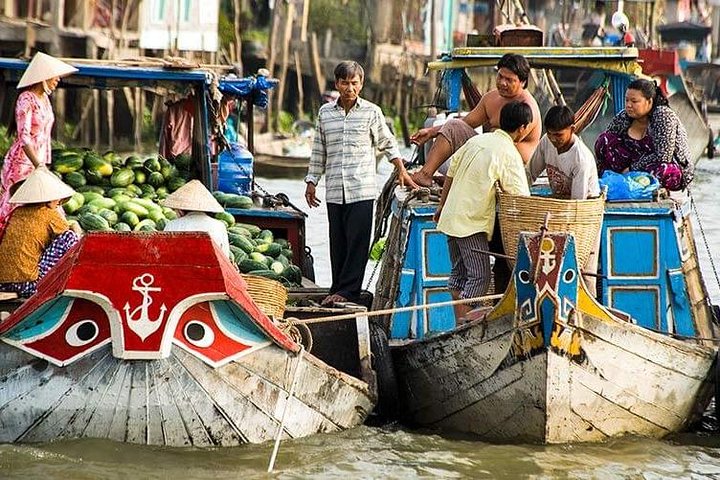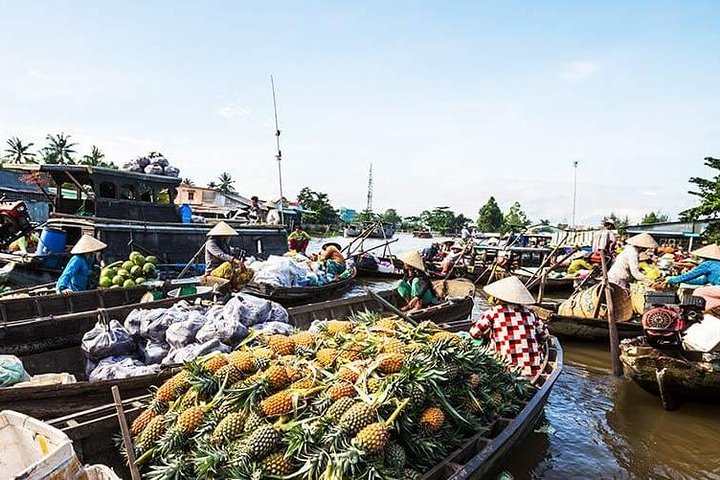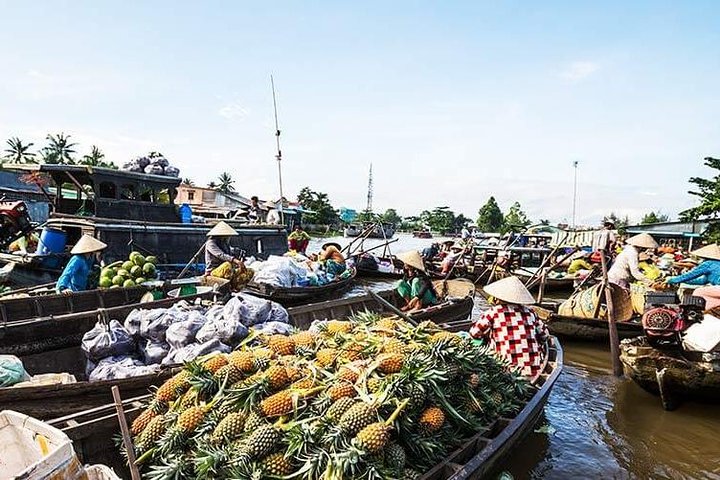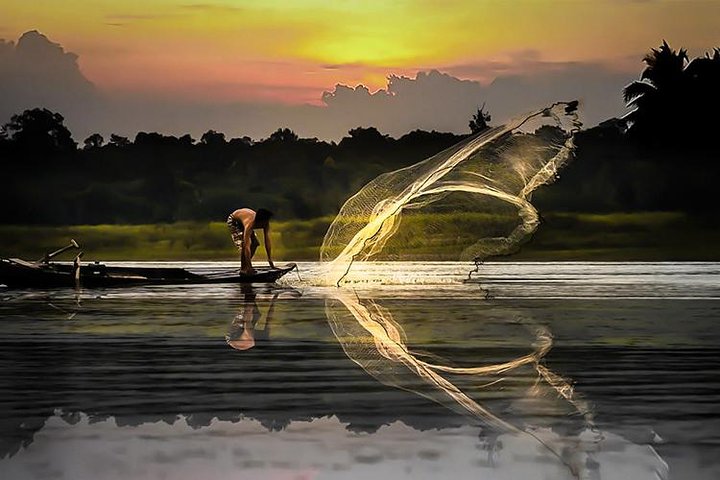Discover Saigon’s vibrant culture, historic sites, and delicious cuisine on this shore excursion. Visit the War Remnants Museum, Jade Emperor Pagoda, and more.
Discover Saigon’s vibrant culture, historic sites, and delicious cuisine on this shore excursion. Visit the War Remnants Museum, Jade Emperor Pagoda, and more.
- The Independence Palace - Encircled by royal palm trees, the striking 1960s architecture of this iconic government building, along with the mysterious atmosphere of its empty halls, creates a captivating sight. The first Communist tanks rolled into Saigon here on April 30, 1975, and it feels as though time has been frozen since that day. The…
-
The Independence Palace - Encircled by royal palm trees, the striking 1960s architecture of this iconic government building, along with the mysterious atmosphere of its empty halls, creates a captivating sight. The first Communist tanks rolled into Saigon here on April 30, 1975, and it feels as though time has been frozen since that day. The building is closely linked to the city’s fall in 1975, yet it’s the quirky details and period motifs that truly capture attention. Also known as the Independence Palace, it served as the residence of the last South Vietnamese president, Nguyen Van Thieu, until his abrupt departure in 1975. Designed by Paris-trained Vietnamese architect Ngo Viet Thu, it exemplifies 1960s architecture with its light and open design. The Reunification Palace, also referred to as Independence Palace, is a significant landmark in the heart of Ho Chi Minh City and is considered a must-see national monument when visiting the city.
-
Central Post Office - This iconic French-era post office is a classic of its time, designed by Marie-Alfred Foulhoux (though often attributed to Gustave Eiffel) and constructed between 1886 and 1891. A mosaic of Ho Chi Minh proudly adorns the end of its barrel-vaulted hall. The post office boasts a distinctive bright yellow exterior with white trim. Its curved windows are elegantly framed with green shutters, and a large clock is prominently displayed at the main entrance. The interior is stunning and spacious, featuring tall, domed ceilings with metal arches and a beautiful patterned tile floor. Inside, there are two painted maps: “Lignes télégraphiques du Sud Vietnam et du Cambodge 1892” (Telegraphic lines of southern Vietnam and Cambodia 1892) shows the postal route from southern Vietnam to Cambodia, and “Saigon et ses environs, 1892” (Saigon and its surroundings) is a local map.
-
Emperor Jade Pagoda - Constructed in 1909 to honor the supreme Jade Emperor (King of Heaven), this is one of the most atmospheric temples in Ho Chi Minh City, filled with statues of mystical deities and heroic figures. The air is thick with the scent of incense, obscuring the intricate woodcarvings. The roof is adorned with elaborate tile work, and the temple’s statues, representing characters from both Buddhist and Taoist traditions, are crafted from reinforced papier-mâché. The temple’s multifaith nature is reflected in its alternative name, Phuoc Hai Tu, which conveys a Buddhist message. Similarly, the Chinese characters in the main temple hall mean ‘The light of Buddha shines on all.’ Over a century has passed with many changes, yet the Jade Emperor Pagoda retains its timeless charm. Its beauty is a harmonious blend of the three main religions of the Orient: Taoism, Buddhism, and Confucianism. Thanks to its impressive and unique beauty, along with its sacred legend, it is one of the most remarkable destinations.
-
Sơn mài Đại Việt - The lacquer is actually the resin of a tree, mixed with colored pigments and solvents, and applied in layers to the object’s surface, resulting in a shiny and durable finish. Eggshell and mother of pearl may be added to the surface before the lacquer is applied, and the finished product is sanded down to reveal the decoration beneath. The high quality of resin from Vietnamese lacquer trees, particularly those in Phu Tho, was a key factor in the rapid development of this art form during the feudal period. Decorated lacquer statues, panels, boxes, and trays (1428-1527) can still be seen in many temples and pagodas. In later centuries, lacquerware was used for larger items such as wooden chairs and tables. Since then, lacquerware has continued to evolve into a cornerstone of the Vietnamese handicraft industry, both domestically and internationally. Today’s most popular items include vases, jewelry boxes, desk sets, trays, and vertical blinds.
-
War Remnants Museum - Established on September 4, 1975, the War Remnants Museum is a member of the International Network of Museums for Peace (INMP) and the International Council of Museums (ICOM). It is the only museum in Vietnam dedicated to systematically studying, collecting, conserving, and displaying exhibits on war crimes and the consequences inflicted on the Vietnamese people by foreign aggressors. At the same time, the museum encourages everyone to oppose unjust wars, preserve global peace, and promote friendship and solidarity among nations. The museum features nine permanent thematic exhibitions and various special collections. Throughout the year, a wide range of activities are organized, including conferences, meetings with war witnesses, and temporary and traveling exhibitions. With nearly one million domestic and international visitors annually, the War Remnants Museum is one of Ho Chi Minh City’s most captivating cultural and tourist attractions.
-
Hồ Chí Minh City People’s Committee - The Ho Chi Minh City Hall is the current name of the former Hotel de Ville or City Hall of Saigon. This ornate yellow French-style building is located on Le Thanh Ton Street at the end of Nguyen Hue Boulevard. Designed by French architect P. Gardes and built between 1898 and 1908, it was known as the Hotel de Ville until 1954. From 1954 to 1975, it was called the City Hall of Saigon under the South Vietnam Government. After the country’s reunification in 1975, it was renamed the Ho Chi Minh City People’s Committee Head Office. This is a popular spot for locals and tourists to take photographs. The City Hall features a Renaissance style inspired by the design of town halls in France. It has a main hall and rectangular wings, with a notable bell tower standing on a pyramid-shaped pedestal. The City Hall is especially spectacular when illuminated at night.

- All entrance fees
- Air-conditioned vehicle
- Bottled water
- English speaking tour guide
- Pick up & drop off at Saigon Port, No.05 Nguyen Tat Thanh street, District 4
- All entrance fees
- Air-conditioned vehicle
- Bottled water
- English speaking tour guide
- Pick up & drop off at Saigon Port, No.05 Nguyen Tat Thanh street, District 4
- Tipping/ gratuities, personal expenses
- Extra charge $30 USD/ each by cash on tour for picking up & dropping off at Hiep Phuoc JSC or SPTC
- Tipping/ gratuities, personal expenses
- Extra charge $30 USD/ each by cash on tour for picking up & dropping off at Hiep Phuoc JSC or SPTC
Ho Chi Minh City, also known as Saigon and long considered as the Pearl of the Far East, is the most dizzying city of commerce and culture in Vietnam. A visit to Saigon is like an encounter with exotic delicious food, French colonial architecture and memories of Vietnam War.
A state-run handicraft enterprise exports a wide range of products—including…
Ho Chi Minh City, also known as Saigon and long considered as the Pearl of the Far East, is the most dizzying city of commerce and culture in Vietnam. A visit to Saigon is like an encounter with exotic delicious food, French colonial architecture and memories of Vietnam War.
A state-run handicraft enterprise exports a wide range of products—including furniture, carpets, lacquer paintings, and other works of art—made largely from local materials and you will be shown a part of this attraction.
There are so many amazing attractions and you will have a chance to discover apart of those such as War Remnants Museum to learn more about Vietnam War, Jade Emperor Pagoda to learn more about a part of Vietnamese culture. Saigon Central Post Office is known as Center of Telegraph in Indochina War or exploration the National Monument of Reunification Palace
- The remaining hours are allotted for the travel time.
- Everyone can join this tour
For a full refund, cancel at least 24 hours before the scheduled departure time.
For a full refund, cancel at least 24 hours before the scheduled departure time.
























